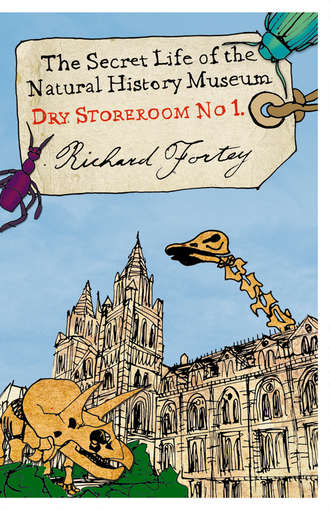
Полная версия
Dry Store Room No. 1: The Secret Life of the Natural History Museum
PhyloCode is based entirely on cladistic phylogenies, and provides a system for naming clades – all of them. The old formal Linnaean categories above species level are abandoned. This is a rather revolutionary suggestion, to say the least, and it is not surprising that it has excited some strong opposition. To my mind the strict logic of the PhyloCode is beside the point. The most important thing about the current system of naming organisms is the common language it provides, not just to other systematists, but to the rest of the world – people like gardeners, or bird watchers, or fungus forayers. Very few members of this larger community know about the details of cladistic phylogenetic analysis, and I suspect that most of them want a meaningful label that they understand rather than reassurance that every category is quite the latest collection of good clades. The 250-year tradition since the great Swedish systematist does count for something. Many of the common categories that a naturalist will comfortably recognize are old Linnaean families. Think of lilies (Family Lilaceae) or daisies (Family Asteraceae) or crows (Family Corvidae). These turn out to be pretty good clades as well, meaning that the resemblance between the species in the families does indeed reflect descent from a common ancestor. In my experience more ‘difficult’ groups of organisms are often reanalysed time and again using the latest cladistic bells and whistles or new molecular evidence, and each new analysis is rather different from the last one. Nor is there any guarantee that the latest version is always the best. Potentially all these different analyses could be named under PhyloCode. In my view this would allow for just too many valid names, as each successive analyst sought to put his imprimatur on his briefly dominant hierarchy. But most important of all is a feeling that offends my democratic instincts, in that the systematization of nature would be even more in the hands of a coterie of specialists sitting in front of their computers than it is now. The binomial system has faults, but I suspect any new system would develop as many. The naming process would be taken away from the naturalists, nature lovers and intelligent laymen, at a time when there has never been so much pressure on the survival of species, or, indeed, on the survival of the taxonomists who know about fleas and carabids, trilobites and ammonites, grasses and orchids, or deep-sea worms. It is the survival of the biological world and of the basis of expertise that studies it that is the real concern of the twenty-first century. Names are the least of it.
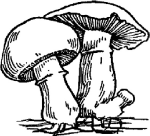
3

Old Worlds

It might seem an odd ambition to try to get everyone to pronounce a word correctly. But mine has always been to get the world to say ‘trilobite’ without fudging, and with a certain measure of understanding. My own mother was wont to say ‘troglodyte’, which at least has a certain prehistoric dimension, even if it refers to human cave dwellers rather than extinct arthropods several hundred million years older than humans. ‘Did you have a nice week with the troglodytes, dear?’ was one of her regular enquiries. A rather more common mispronunciation is ‘tribolites’ – an anagram of the correct word for sure, but probably an unconscious hommage to one of the humanoid tribes on Star Trek. ‘The tribolites have made it through the air lock, Captain. Permission to use phasers!’ I have no particular gripe against those who pronounce the word with a first syllable to rhyme with ‘thrill’, although I have always said ‘try-low-bites’ myself. The tri- part, of course, refers to the threefold division into which the calcareous carapaces of these animals are usually obviously divided lengthways – ‘three lobes’. On their underside, but rarely preserved, were many jointed legs of typical creepy-crawly kind, which reveal the trilobites to have been distant cousins of the crabs, butterflies, spiders and millipedes, with which they should be classified – in Linnaean terms, Phylum Arthropoda, Class Trilobita. For getting on for three hundred million years trilobites swarmed in the oceans, moulting and mating, and left behind their hard carapaces in the rocks as testimony to their former importance. At the moment we know something like five thousand genera of trilobites, and new species are being discovered entombed in ancient sediments such as limestones and shales. It is not surprising that they have been described as the ‘beetles of the Palaeozoic’. In fact, they still have a long way to go before they approach the beetles in biodiversity, but they are wonderfully varied creatures despite their simple ground plan, some with carapaces as smooth as beans, others like arthropodan porcupines, many as large as lobsters, yet others as tiny as water fleas. They evolved fast and are not uncommon fossils, so that they are useful in dating rocks – somebody who ‘knows his bugs’ should be able to say within a few minutes whether he is looking at Cambrian or Devonian examples; with more study the time zone can be narrowed further. Trilobites can tell about ancient climates, because different species lived in tropical as opposed to cool seas. They can tell us about vanished continents in distant eras, since different trilobites characterized different parts of the world. Study of apparently esoteric extinct animals can help us reconstruct the history of our planet.
A few years ago I wrote an account of recent discoveries of remarkable trilobites in the Devonian rocks of Morocco, dating from more than four hundred million years ago. I included an illustration of a bizarre creature that carried a trident on its head, as far as I know a unique structure in the whole animal kingdom. In 2000 this trilobite had no scientific name, although it was already possible to buy specimens of it over the internet. My colleague Pierre Morzadec named the trident-bearing genus Walliserops in 2001, commemorating a well-known Devonian specialist, Professor Otto Walliser of the University of Göttingen. In 2005 I went to Morocco to see the localities where these trilobites had been discovered. Brian Chatterton of the University of Alberta in Edmonton, Canada has been making a study of the trilobite sites in the Anti-Atlas for several years, and he invited me to join his field party that spring. Trilobites have become a major industry in the area around the small town of Erfoud, which had previously subsisted on a little bit of tourism to add to the small rewards provided by dates and agriculture. Mr Hammi was our guide and mentor; he is a helpful local Berber with no scientific training but a hugely intelligent ‘eye’ for a good trilobite. Since these trilobites have to be laboriously prepared out of the rock by hand, Hammi has made a successful family business with his brother supplying splendid specimens that have finished up in collections around the world. He has partly been equipped with microscopes and tools by an English fossil dealer from Cambridge, Brian Eberhardie, who also sold on some of the best examples. I might add that there are several other successful businesses producing cheap fakes. The localities in question are dotted over one of the most barren desert regions in which I have ever worked. It seems that the High Atlas Mountains steal all the water, leaving but a trickle for the Sahara side. But the barren hillsides of the Anti-Atlas provide perfect exposure of the rock formations. This is what geologists call ‘layer cake’ stratigraphy, where each stratum is horizontal, or gently tilted, so that climbing up a hillside from stratum to stratum is equivalent to climbing a staircase upwards through geological time. A productive layer can be traced over a long distance, or at least until a stretch of stony desert interrupts the outcrop. We went to an isolated hill called Zguilma, where trident trilobites had been collected over several years. There was actually a tree or two at the foot of the hill, tapped deep into some tiny source of water. Even in the cooler part of the year their shade was difficult to resist at three in the afternoon; in the summer it must have been impossible to work in the open.
The extraordinary sight that greeted us at Zguilma was a trilobite mine. The productive layer had been traced all along the bottom of the hillside and dug out in a series of trenches and pits, flanked by piles of debris. When Hammi arrived, muffled shouts in Arabic sounded from a hole, and out climbed a cadaverous old man with one or two yellow teeth displayed in a broad grin. He had been ten feet down in the hole in the full heat for several hours breaking hard limestone rocks. It was like being employed in Hades, with added hard labour. Mysteriously, the old man seemed cheerful enough. He was the beginning of the chain of discovery, for if he broke across one of the precious trilobites he would put both ‘halves’ on one side, and Hammi would pay him modestly for the find. Then it would be taken on to the laboratory for preparation, and if a good trilobite were extracted, might eventually fetch up at the Houston Fossil Show or some similar event carrying a price tag of several thousand dollars. The wizened old man seemed untroubled by the chain that led to Houston, and was doubtless unaware of the profit differential; he was glad of a break to share the sweet mint tea that is the social lubricant in the desert (‘Berber Whisky’ is a joke for the infidel). Every evening, in the incomparably still dusk that comes in the desert, we would all share tajine made from tough old bits of meat that had spent the day hanging on string between the branches of the token tree, mopped up with Moroccan bread cooked in warm embers. We had the same bread for breakfast spread with ‘La vache qui rit’ processed cheese. After a couple of weeks the diet began to pall. I have been allergic to laughing cows ever since.
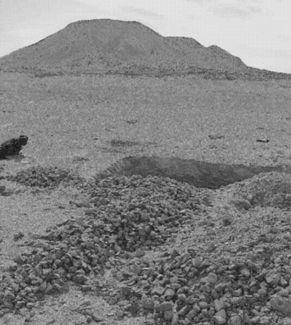
Trilobite ‘mines’ in the Devonian strata of the desert in the Moroccan Anti-Atlas.
Trilobite mines in Morocco. Photo © Brian Chatterton.
Several years earlier I had persuaded the Natural History Museum to purchase from Brian Eberhardie another extraordinary trilobite from Zguilma. Now I had the chance to examine where it had come from for myself: evidently, it had emerged from some hellhole. The eyes on this animal were like those of no other trilobite, because they were elevated into a pair of near vertical towers, the outer side of which were lined with very conspicuous files of lenses. Sight was obviously at a premium for this particular species. The challenge was to work out how such flamboyant ‘peepers’ worked. One thing could not be disputed: this heavily armoured trilobite bearing its massive eyes must have lived on the sea floor. I then noticed something curious about the eyes: they had eyeshades overhanging them. Most trilobite eyes are rather strongly curved from top to bottom, with numerous tiny lenses and no eyeshade, but this trilobite had relatively few lenses in a vertical array, so that they looked like ranks of windows in the tower. This is an appropriate simile because trilobite lenses do indeed work as a kind of window made of the mineral calcite. Because of the optical properties of this particular mineral, light passes through the lenses normal to their surface, or, to put it another way, it is possible to tell in which direction a given lens could see by imagining a ray of light impinging at right angles to its surface. So it was obvious that this remarkable trilobite could look all around over the sediment surface on which it dwelt, for the lenses were arced in a semicircle in each eye affording a ‘view’ of the surrounding area. It obviously could not look upwards, not least because the eyeshade would inhibit the view in that direction. Then again the vertical arrangement of the lenses meant that the trilobite could see distant objects. The curved nature of most trilobite eyes means that each lens subtends a cone of sensitivity that naturally widens the further away from the eye you are; the sight was good close by and poorer at distance. By contrast, the big-eyed trilobite with its straight-sided eye would have been able to detect small movements in prey even at some distance. But there is a problem here, for distant light is also weaker, and interference from stray rays becomes more of a problem. This is where the eyeshade comes in. For it rather neatly cuts out the light from above which affords the greatest distraction for shallow marine organisms (at moderate water depth light is refracted to come vertically from above). It is rather like a hunter on the African plains contemplating a distant impala by shading his eyes. The trilobite anticipated the baseball cap by four hundred million years.
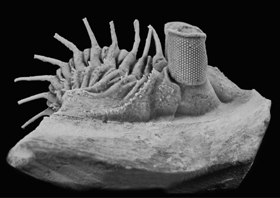
The remarkable eyes of the Devonian trilobite Erbenochile, seen from the side.
Devonian trilobite Erbenochile. Author’s own collection.
This was an exciting enough discovery to publish a short account of it in the journal Science. The first thought I had was that this must be a new kind of trilobite. My mind began to ferment all sorts of nice descriptive names – Gogglyops or Spectaculaspis perhaps. I had already checked through the trilobite collections to see if there was any specimen that resembled ours – and there wasn’t. But before I got too embroiled in new names I discovered an extremely obscure publication about some rocks in Algeria. Not many libraries have copies of the Notes et Mémoires, but the Natural History Museum is one of them. It was clear from a rather poor illustration published in this journal in 1969 that a similar trilobite to ours had been collected across the border in Algeria not very far as the desert crow flies from Zguilma. Clearly, we needed to know more. Fortunately, we discovered that Pierre Morzadec had refigured this material in a rather less obscure journal, and he had dug it out, or as we say prepared it, rather well from the rock, so that one could see more of its features. He had also given it a new generic name, Erbenochile. However, all the material from Algeria lacked the head, surely the most distinctive part of the trilobite. But close examination revealed that the tail of the trilobite was almost as distinctive as the head, having a very particular pattern of spines around its margin, which was different from that of any other Devonian trilobite. The Algerian specimens were identical to the Moroccan one as far as the features of the tail were concerned. There really was no escaping the fact that our spectacular trilobite species had been named already, albeit from a specimen lacking the remarkable eyes. Applying the rule of priority means that Erbenochile erbeni is the name we must use for our trilobite. If we had not had access to a wonderful library, we could well have got the name wrong, and caused much confusion for future generations.
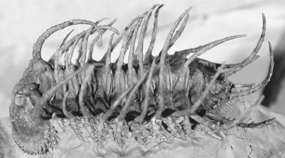
Another astonishingly spiny fossil trilobite from the Devonian of Morocco: the spines on this odontopleurid are genuine, but fakes are often offered for sale.
Spiny trilobite, odontopleurid. Photo © Brian Chatterton.
This example is typical of the kind of problems that exercise the judgement of a taxonomist, a mixture of scholarly research and careful observation. The history of naming animals and plants is full of examples where labels have been incorrectly applied. In the nineteenth century communication between scholars was imperfect, so it was then quite likely that an animal or plant might have been named twice by accident. The priority rule often had to be applied. I regret to say that there were also numerous cases where scientists ‘rushed to press’ to establish their priority over any potential rivals. One of the most infamous examples concerning fossils was the race between Professors Edward Drinker Cope and Othniel Charles Marsh in the latter half of the nineteenth century to describe and name the spectacular North American dinosaurs then coming to light. This was a case of intellectual war, fought out in publications and in academic disputes. The two protagonists really loathed one another, and each was determined to name any newly discovered animal before his rival. Such enmity certainly stirred up a fever of activity in the prosecution of the war of reputations, but sometimes the casualties were names that got caught in the crossfire. In other examples, it is hard to establish who or what has priority, and the bemused scholar will find himself examining the small print on inside covers to find out whether a given book was published in May or September of 1799. I have used faded library stamps as evidence of the receipt of a publication by the Museum – which must therefore have been published earlier in its country of origin. What is evidently needed is a set of laws to sort out nomenclatural disputes – and so we have the International Code for Zoological Nomenclature, and there is a botanical equivalent. I have to admit that the Code makes for pretty dull reading and can, in the wrong hands, become a pedant’s playground. But it generally works to sort out which name is the valid one. However, there are cases when a rigid application of the Code would result in something silly happening to very familiar names. This might occur, for example, if some bookish scholar discovered a work of unprecedented obscurity containing earlier names for well-known animals. It would be highly undesirable in this case rigidly to apply the rule of priority, for names are a means of communication first and foremost, and nobody wants to revive an old name just for the sake of it. But how can a zoologist decide when to flout the rule of priority? The answer is to apply to the International Commission on Zoological Nomenclature (ICZN) with details of the case in question. With sufficiently good reasons a later name might well be conserved – this is decided by a vote of the Commissioners, who are an international group of taxonomists. Mostly this is just a way of formalizing common sense.
Конец ознакомительного фрагмента.
Текст предоставлен ООО «ЛитРес».
Прочитайте эту книгу целиком, купив полную легальную версию на ЛитРес.
Безопасно оплатить книгу можно банковской картой Visa, MasterCard, Maestro, со счета мобильного телефона, с платежного терминала, в салоне МТС или Связной, через PayPal, WebMoney, Яндекс.Деньги, QIWI Кошелек, бонусными картами или другим удобным Вам способом.





